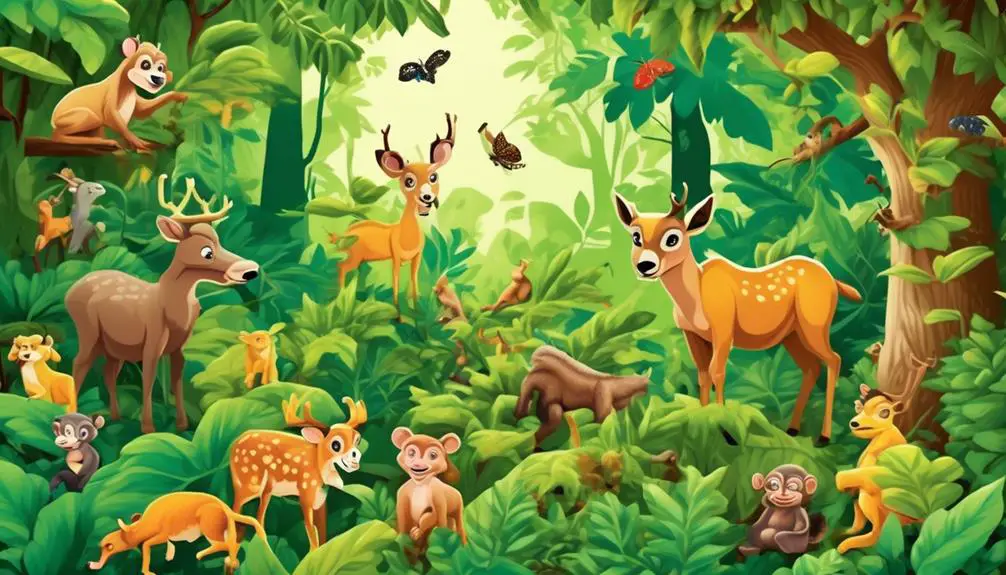Are you curious about the leaf-eating animals that roam the forests and woodlands, munching on tree leaves just like a kid devours candy? Well, get ready to uncover the fascinating world of creatures that thrive on this leafy feast.
From majestic giraffes with their elongated necks to charming koalas that munch on eucalyptus leaves, there’s a whole array of herbivores that rely on tree foliage for their survival. But it doesn’t stop there! Birds, reptiles, insects, and even some mammals that are often considered pests in urban areas, all have a taste for those green, nourishing leaves.
So, if you’re curious to learn more about these leaf-loving animals and the unique adaptations that allow them to thrive, then keep on reading.
Herbivorous Mammals
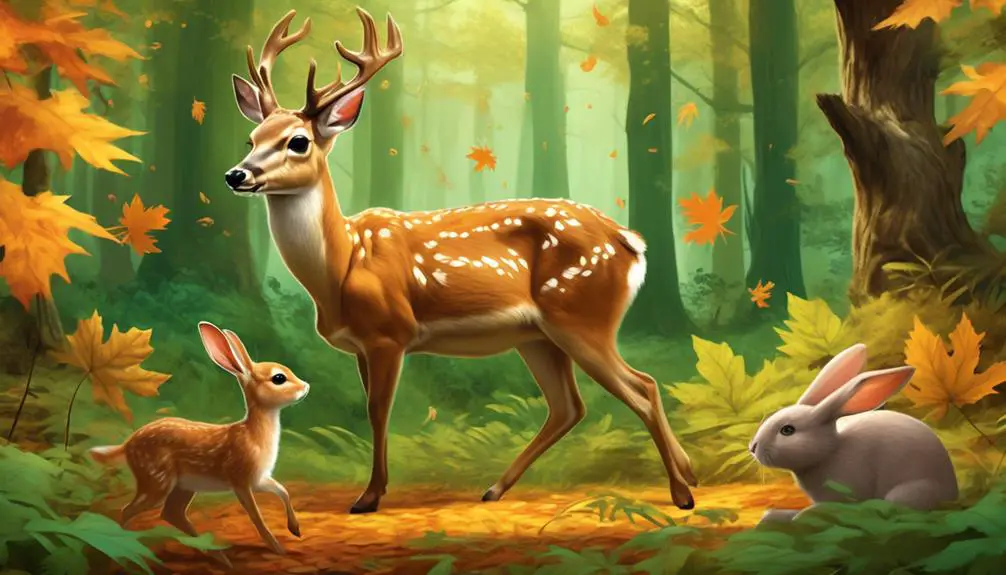
Herbivorous mammals, such as elephants, cows, deer, and monkeys, play a crucial role in ecosystems as they consume various plant species for their sustenance. These animals have specialized digestive systems that allow them to efficiently extract nutrients from plant material.
Elephants, for example, are known to consume large quantities of grasses, leaves, and bark. Their diet consists of a wide variety of plant species, which helps in maintaining the balance of vegetation within their habitat.
Cows, on the other hand, primarily feed on grasses and other herbaceous plants. They’ve a unique digestive system that allows them to break down cellulose, a complex carbohydrate found in plant cell walls.
Deer are known to browse on leaves and twigs, and their feeding behavior can shape the structure and composition of the vegetation in their environment.
Monkeys also play a significant role as herbivores, consuming fruits, leaves, and other plant parts. Their feeding habits contribute to seed dispersal and plant regeneration.
Herbivorous Birds
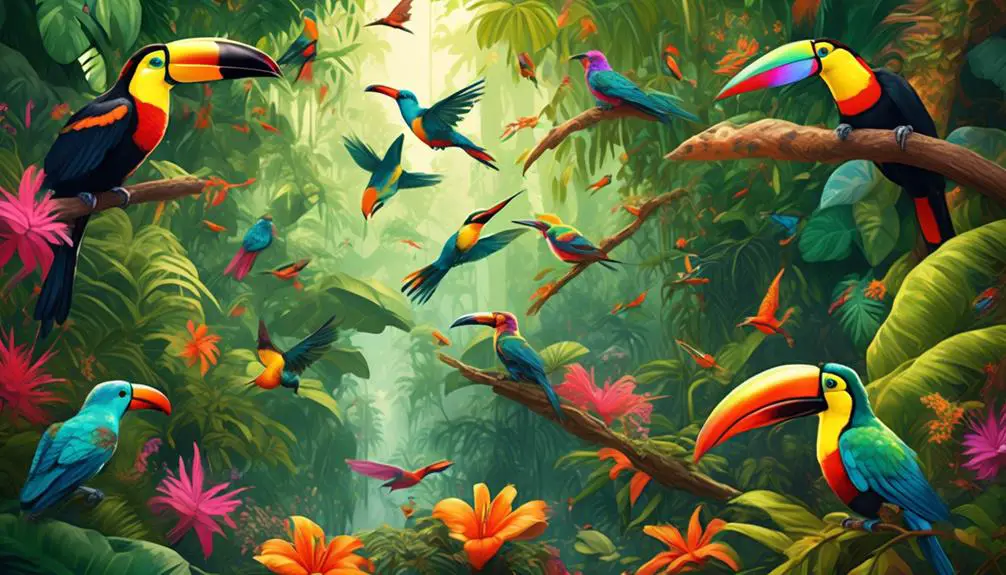
Birds that primarily consume plant material, such as leaves, play an important role in ecosystems as herbivores. These herbivorous birds include species like geese, orioles, and hummingbirds.
Geese are known to graze on grass and consume various leaves. They play a crucial role in maintaining the balance of vegetation in wetland habitats.
Orioles, on the other hand, feed on nectar, insects, and fruits, but they also have a fondness for tree leaves. Their consumption of leaves contributes to nutrient cycling and aids in the decomposition process.
Hummingbirds, despite their small size, have a diverse diet that includes flower nectar, insects, and tree sap. However, they’ve been observed plucking and consuming tree leaves, especially when other food sources are scarce.
By consuming leaves, herbivorous birds contribute to the overall health and vitality of ecosystems. They help control plant growth, disperse seeds through their droppings, and provide a food source for other animals in the food chain.
Understanding the feeding habits of these birds is essential for understanding the intricate relationships within ecosystems.
Reptiles and Amphibians
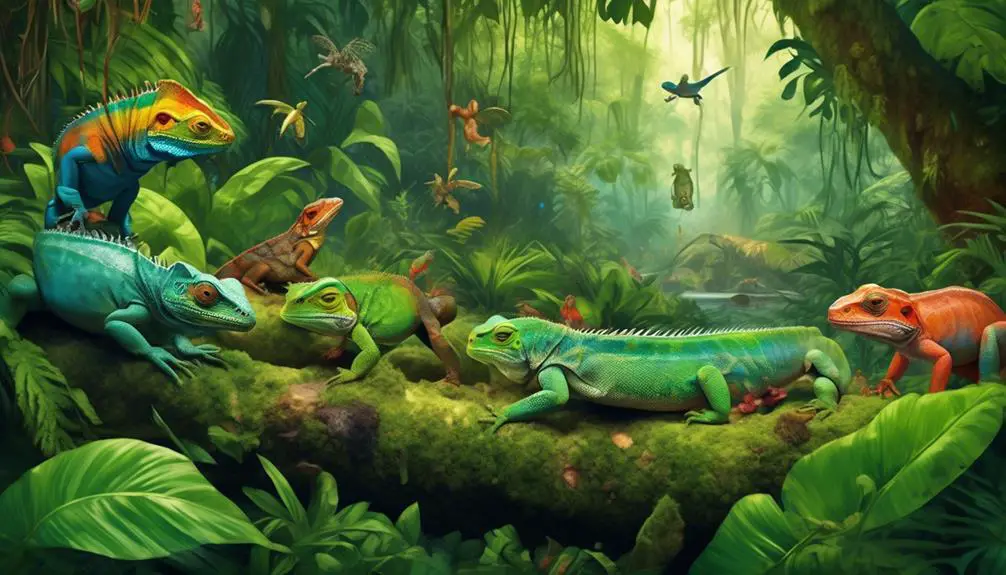
Reptiles and amphibians, including tortoises and green iguanas, are among the animals that consume tree leaves as part of their herbivorous diets. These fascinating creatures have unique adaptations that allow them to efficiently consume and digest plant material. Let’s take a closer look at some reptiles and amphibians that eat tree leaves:
| Animal | Diet | Notable Features |
|---|---|---|
| Tortoises | Primarily herbivorous | Strong jaws for tearing and chewing leaves |
| Green Iguanas | Herbivorous | Long, agile tongues for grasping and manipulating leaves |
| Chameleons | Omnivorous, but eat leaves | Specialized feet for climbing and reaching leaves |
| Green Anoles | Omnivorous, but eat leaves | Flexible tongues for capturing small insects on leaves |
Reptiles like tortoises and green iguanas have evolved to thrive on a diet consisting mainly of tree leaves. They possess strong jaws and teeth that enable them to tear and chew tough leaves. Chameleons and green anoles, although omnivorous, also include leaves in their diet. These arboreal creatures have specialized feet that allow them to climb and reach leaves in the treetops. Additionally, their flexible tongues aid in capturing small insects that may be found on leaves. By incorporating tree leaves into their herbivorous diets, reptiles and amphibians have adapted to utilize this abundant food source in their natural environments.
Herbivorous Invertebrates
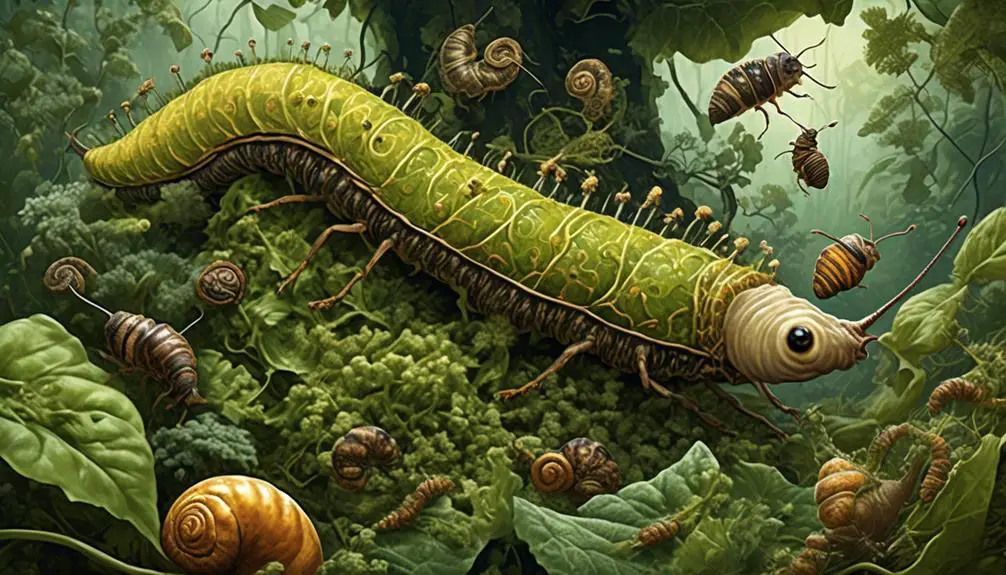
In the world of herbivorous diets, the animal kingdom boasts a diverse array of leaf-eating creatures, including a fascinating group of invertebrates. Herbivorous invertebrates play a crucial role in plant ecosystems by consuming tree leaves. This group includes insects such as caterpillars, grasshoppers, and beetles.
Caterpillars, for example, have specialized mouthparts called mandibles that allow them to chew and consume leaves. Grasshoppers, on the other hand, use their strong jaws to bite and tear leaves before ingesting them. Beetles have specialized mouthparts that enable them to scrape and chew on tree leaves.
In addition to insects, herbivorous invertebrates also include other species like slugs and snails. These slimy creatures use their radula, a specialized feeding organ, to scrape and rasp on leaves, consuming them in the process. Slugs and snails are known to be voracious eaters and can cause damage to trees and other plants if their populations aren’t kept in check.
Giraffes
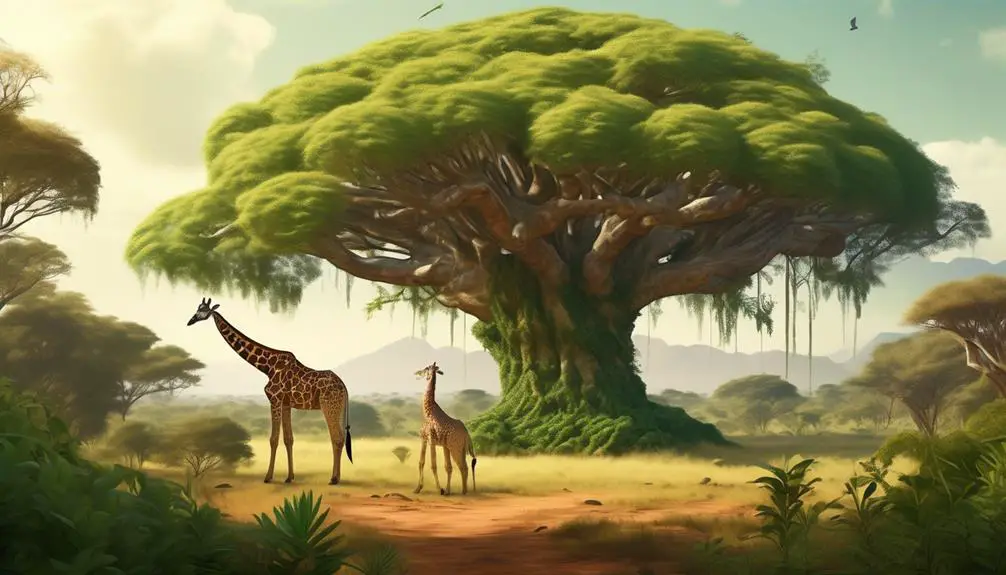
Giraffes, with their long necks and specialized adaptations, are fascinating herbivorous mammals that primarily consume tree leaves from Acacia trees. Their unique anatomy allows them to reach heights of up to 18 feet to access the leaves that other animals can’t reach. Giraffes can consume up to 75 pounds of food each day, and they’ve a strong preference for the leaves of Acacia trees due to their high nutritional value.
Their 18-inch tongue and prehensile lips are specially adapted to help them grab thorny leaves without injuring themselves. Giraffes also have a unique digestive system that allows them to process and extract nutrients from the tough, fibrous leaves. They’ve a four-chambered stomach, similar to cows, which enables them to ferment and break down the plant material efficiently. This adaptation helps them maximize their energy intake from the leaves.
Giraffes are truly remarkable animals, exemplifying the incredible ways in which herbivorous mammals have evolved to thrive on a diet primarily consisting of tree leaves.
Koalas
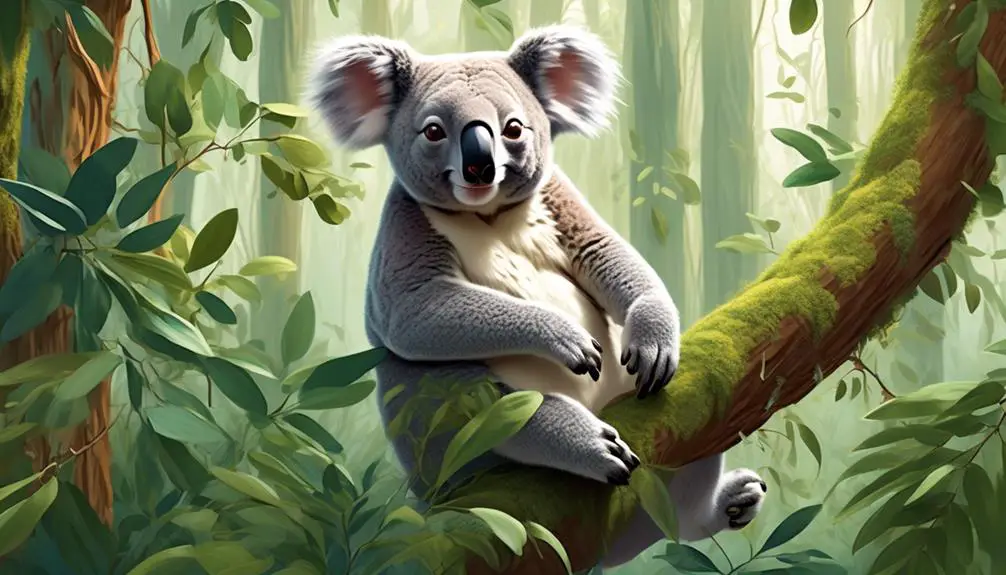
Koalas, known for their specialized dietary needs and slow metabolism, primarily consume eucalyptus leaves. These adorable marsupials have specific dietary requirements and can only consume certain eucalyptus species. Their diet consists almost exclusively of leaves, as they obtain most of their water from the leaves themselves. Koalas spend most of their time resting and digesting due to their slow metabolic rate. They have specialized teeth for grinding leaves and a unique digestive system to process their fibrous diet.
To emphasize the specialized dietary needs of koalas, here is a table showcasing the eucalyptus species that they prefer:
| Preferred Eucalyptus Species |
|---|
| Eucalyptus radiata |
| Eucalyptus camaldulensis |
| Eucalyptus tereticornis |
Koalas have evolved to be highly efficient at extracting nutrients from eucalyptus leaves. These leaves are tough and low in nutrition, so koalas have developed adaptations such as a long digestive tract and a specialized gut microbiome to break down the complex compounds found in the leaves. Additionally, their slow metabolism allows them to conserve energy and maximize the absorption of nutrients from their food.
Pigeons

Pigeons, commonly known for their ability to consume a variety of plant material, including tree leaves, are often found in urban areas where they may cause damage to trees by stripping leaves and bark.
Pigeons, scientifically known as Columba livia, belong to the family Columbidae. These birds have a specialized diet that includes not only leaves but also seeds, grains, and fruits. Pigeons have a unique digestive system that allows them to efficiently process plant material. They’ve a muscular gizzard that helps break down tough leaves and fibrous plant matter. Pigeons also possess a crop, which is a specialized pouch in their esophagus where food is temporarily stored and softened before digestion. This enables them to consume large quantities of plant material in a short period of time.
While pigeons play an important role in seed dispersal, their feeding habits can be detrimental to trees in urban areas. They may strip leaves and bark, leading to weakened tree health and potential tree mortality. Therefore, it’s essential to find effective strategies to manage pigeon populations and mitigate the damage they cause to trees in urban environments.
Quokkas
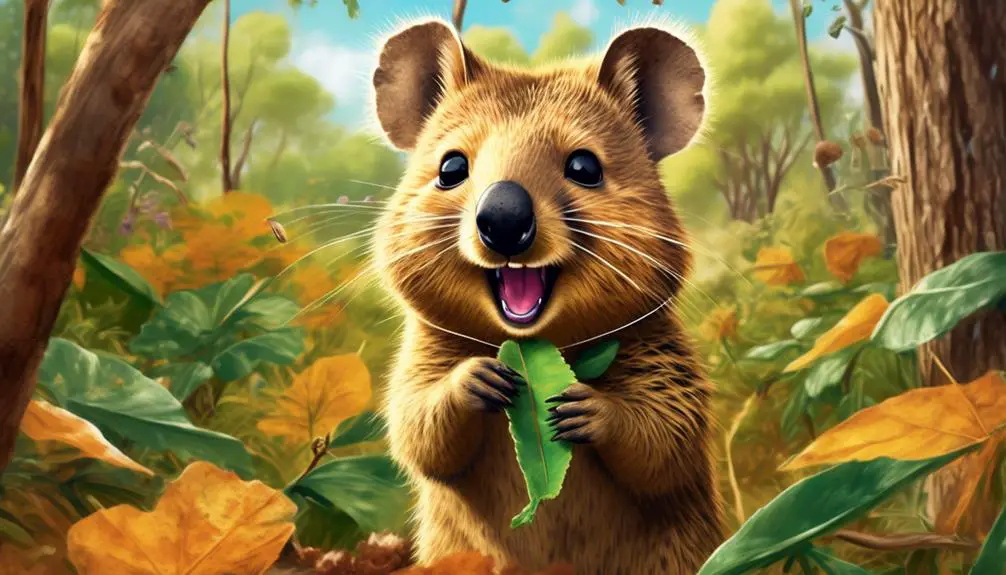
While discussing leaf eating animals, it’s important to explore the dietary habits and specialized digestive systems of quokkas, herbivorous marsupials mainly found in Western Australia. Quokkas, also known as Setonix brachyurus, have a varied diet that includes tree leaves, grasses, fruits, and seeds. They’re known to consume a wide range of plant species, making them opportunistic feeders.
Quokkas have a unique digestive system that allows them to efficiently process plant material. They possess a specialized stomach chamber called a foregut fermenter, which allows for the fermentation of tough plant fibers. This fermentation process breaks down the cellulose present in the leaves, enabling the quokkas to extract nutrients from the plant material.
Quokkas have adapted to their diet by developing strong jaw muscles and sharp incisor teeth, which aid in the consumption of tree leaves. Their digestive system is highly efficient in extracting nutrients from plant matter, allowing them to thrive on a primarily herbivorous diet.
Cows, Turkeys, Goats, Rabbits, and Donkeys
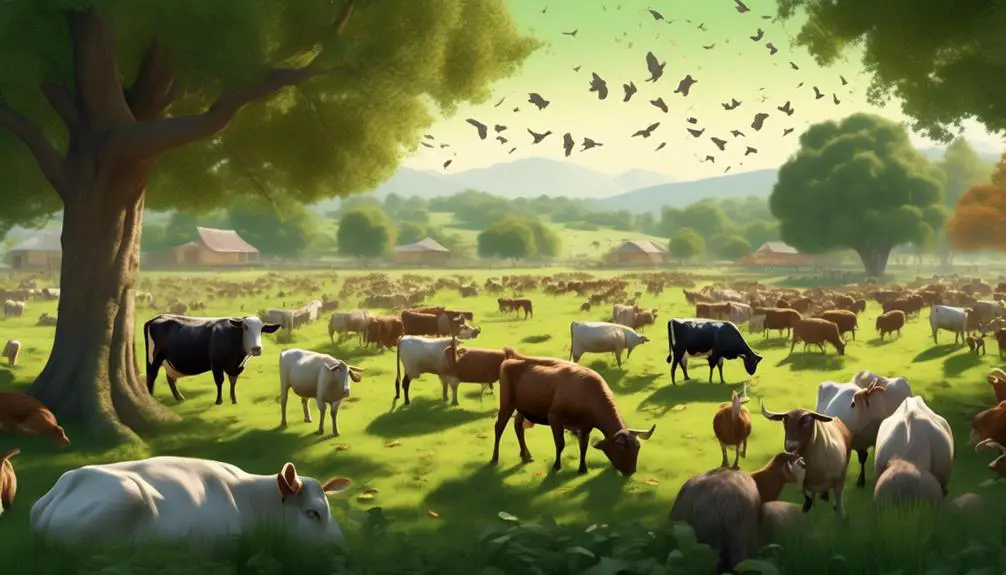
Cows, turkeys, goats, rabbits, and donkeys are all herbivorous animals that commonly eat leaves. They’ve adapted to a leafy diet and rely on tree leaves as a source of forage.
Grazing animals like cows and goats utilize their specialized digestive systems to process and extract nutrients from leaves, while rabbits and turkeys also incorporate leaves into their diets for sustenance.
Leafy Diet for Herbivores
As herbivores, cows, turkeys, goats, rabbits, and donkeys have a leafy diet that plays a significant role in their nutritional needs and overall health. These animals consume a variety of tree leaves, which provide them with essential nutrients such as fiber, vitamins, and minerals.
Cows, for example, graze on grass and other leafy plants, utilizing their specialized digestive system to break down cellulose found in plant cell walls.
Turkeys, goats, rabbits, and donkeys also rely on tree leaves as a source of sustenance, benefiting from the high water content and abundant nutrients present in these foliage.
The leafy diet of these herbivores ensures proper digestion, supports growth and development, and helps maintain their overall well-being.
Grazing Animals and Leaves
Grazing animals such as cows, turkeys, goats, rabbits, and donkeys rely on tree leaves as an essential component of their diet, providing them with vital nutrients for optimal health and growth. These animals have evolved to efficiently digest and extract nutrients from leaves, which are rich in carbohydrates, proteins, and minerals. The table below provides a comparison of the grazing animals mentioned in terms of their leaf-eating habits.
| Animal | Leaf-eating Habits |
|---|---|
| Cows | Consume grasses and leaves as their primary diet. |
| Turkeys | Feed on a variety of plants, including tree leaves. |
| Goats | Known to browse on leaves and twigs, especially from shrubs and trees. |
| Rabbits | Eat a wide range of plant material, including tree leaves. |
| Donkeys | Graze on grasses and may occasionally consume tree leaves. |
These grazing animals play an important role in maintaining the balance of ecosystems by controlling vegetation growth and nutrient cycling. Their ability to efficiently extract nutrients from tree leaves allows them to thrive in their natural habitats.
Tree Leaves as Forage
Tree leaves serve as a valuable source of forage for cows, turkeys, goats, rabbits, and donkeys, providing them with essential nutrients for their growth and overall health.
Cows, being ruminants, have a specialized digestive system that allows them to efficiently break down the cellulose found in leaves.
Turkeys, on the other hand, are able to digest leaves due to their unique digestive enzymes.
Goats have a wide-ranging diet and are known for their ability to consume a variety of plants, including tree leaves.
Rabbits have a specialized digestive system that allows them to extract nutrients from fibrous plant material like leaves.
Donkeys, similar to horses, can consume tree leaves when other food sources are limited.
Insects, Squirrels, Chipmunks, and Voles
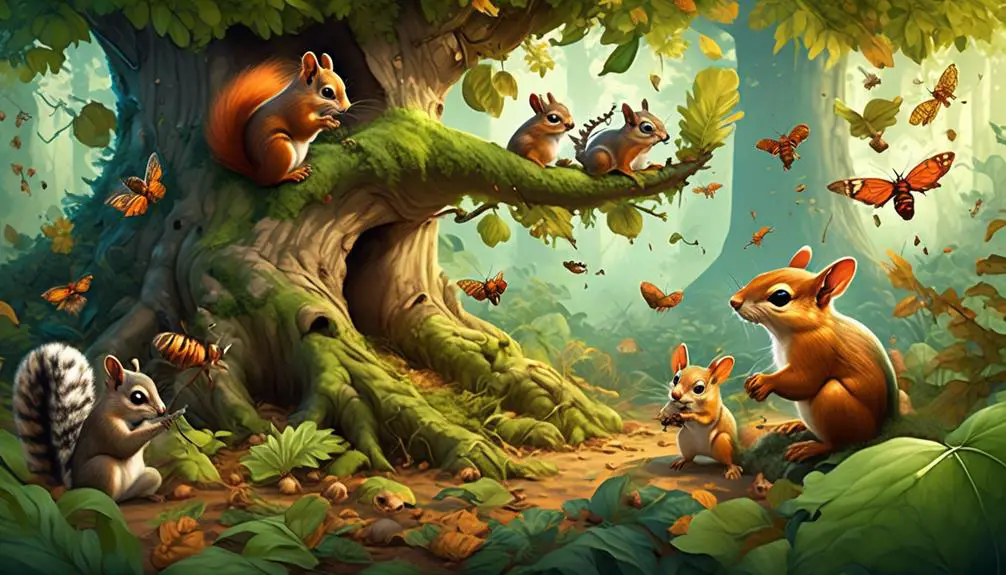
Insects, squirrels, chipmunks, and voles are among the various animals that consume tree leaves as part of their diet.
Insects, such as grasshoppers, beetles, crickets, and caterpillars, can cause significant damage to tree leaves. They chew on the leaves, often leaving behind ragged edges or holes. Sawflies, in particular, feed on leaf tissue between the veins, creating distinctive patterns of damage. Leaf-cutting ants are another insect that eats tree leaves. They cut leaves into circular shapes and transport them to their nests, where they use them as a substrate for cultivating fungus.
Squirrels and chipmunks are small mammals that also eat tree leaves. They have a diverse diet that includes nuts, seeds, fruits, and foliage. These agile climbers can reach high branches and strip bark from trees. Their feeding habits can be problematic for tree health and can even lead to the decline or death of trees.
Voles, on the other hand, are small rodents that consume tree leaves, as well as grasses, seeds, and roots. They are known to cause damage to young trees by creating tunnels and gnawing on the bark. Voles are active throughout the year and can have a significant impact on tree health in certain areas.

Erzsebet Frey (Eli Frey) is an ecologist and online entrepreneur with a Master of Science in Ecology from the University of Belgrade. Originally from Serbia, she has lived in Sri Lanka since 2017. Eli has worked internationally in countries like Oman, Brazil, Germany, and Sri Lanka. In 2018, she expanded into SEO and blogging, completing courses from UC Davis and Edinburgh. Eli has founded multiple websites focused on biology, ecology, environmental science, sustainable and simple living, and outdoor activities. She enjoys creating nature and simple living videos on YouTube and participates in speleology, diving, and hiking.

